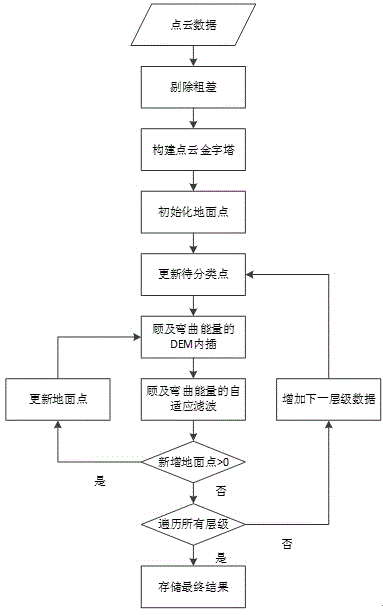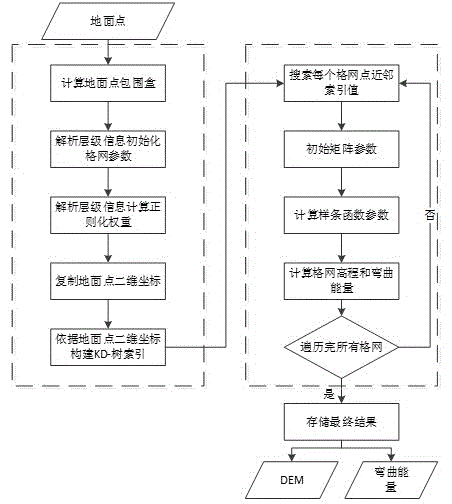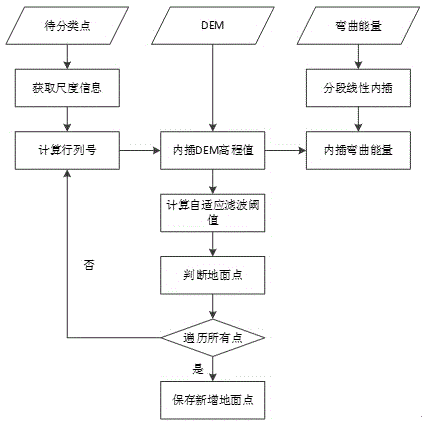Adaptive point-cloud filtering method for complex terrain structure
A complex terrain and self-adaptive technology, applied in the field of geospatial information systems, can solve problems such as difficult to adapt to the intricate ground-non-ground object structure, complex urban structure, and difficult to deal with complex terrain point clouds
- Summary
- Abstract
- Description
- Claims
- Application Information
AI Technical Summary
Problems solved by technology
Method used
Image
Examples
Embodiment
[0073] This embodiment provides a point cloud filtering method that adapts to complex terrain structures, digs deeply into the special role of bending energy in DEM interpolation and expression of terrain fluctuations, and interpolates in DEM based on the assumption of second-order continuous smoothness of the surface. In the process, the bending energy is used as a regularization constraint to overcome the noisy image. And use the bending energy display to describe the terrain fluctuations, which is used for the adaptive optimization of the filtering parameters. On this basis, an automated filtering process is designed, and a pyramid filtering strategy from coarse to fine is adopted to improve filtering efficiency and reliability.
[0074] In this embodiment, the relationships among the modules involved are as follows: figure 1 As shown, in the coarse-to-fine filtering process, each iteration includes the following two main steps: 1) local noise-resistant DEM interpolation a...
PUM
 Login to View More
Login to View More Abstract
Description
Claims
Application Information
 Login to View More
Login to View More - R&D
- Intellectual Property
- Life Sciences
- Materials
- Tech Scout
- Unparalleled Data Quality
- Higher Quality Content
- 60% Fewer Hallucinations
Browse by: Latest US Patents, China's latest patents, Technical Efficacy Thesaurus, Application Domain, Technology Topic, Popular Technical Reports.
© 2025 PatSnap. All rights reserved.Legal|Privacy policy|Modern Slavery Act Transparency Statement|Sitemap|About US| Contact US: help@patsnap.com



